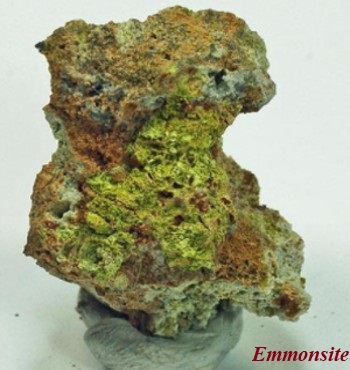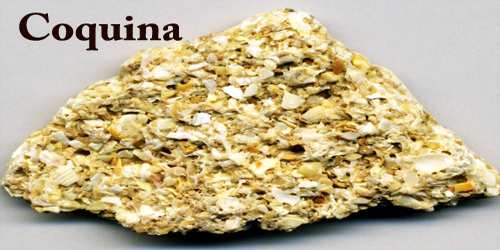Emmonsite, also known as durdenite, is an iron tellurite mineral with the formula: Fe2(TeO3)3·2(H2O). It is a triclinic-pinacoidal mineral containing hydrogen, iron, oxygen, and tellurium. It was named after Samuel Franklin Emmons, an American economic geologist formerly at the United States Geological Survey.
Emmonsite is an uncommon mineral that occurs as a product of the alteration of tellurium minerals in oxidized, hydrothermal precious metal deposits. It forms small crystals that can make attractive green micro mountable specimens
General Information
- Category: Tellurite mineral
- Formula: Fe2(TeO3)32(H2O)
- Crystal system: Triclinic
- Crystal class: Pinacoidal (1) (same H-M symbol)

Properties
Emmonsite forms triclinic crystals. It is of a yellowish-green color, with a vitreous luster, and a hardness of 5 on the Moh scale.
- Color: Yellowish green
- Mohs scale: hardness: 5
- Luster: Vitreous
- Diaphaneity: Opaque to translucent
- Specific gravity: 4.52–4.55
- Optical properties: Biaxial (-)
Occurrence
Emmonsite was first described in 1885 for an occurrence in the Tombstone District, Cochise County, Arizona. It was named for the American geologist, Samuel Franklin Emmons, (1841–1911), of the United States Geological Survey.
Emmonsite is found, often with quartz or cerussite in the Tombstone, Arizona area. It is also associated with native tellurium, tellurite, native gold, pyrite, rodalquilarite, mackayite, sonoraite, cuzticite, and eztlite.
Localities for Emmonsite are in the United States including in the Clinton mine here in the Black Hills of South Dakota, Mexico, Honduras, Chile, and Armenia, among a few others.
Information Source:
















